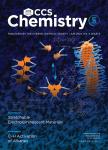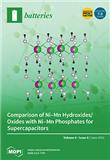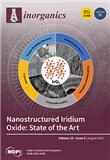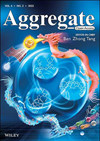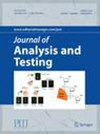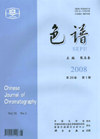Surface ScienceSCIE
国际简称:SURF SCI 参考译名:表面科学
- 基本信息:
- ISSN:0039-6028
- E-ISSN:1879-2758
- 是否OA:未开放
- 是否预警:否
- TOP期刊:否
- 出版信息:
- 出版地区:NETHERLANDS
- 出版商:Elsevier
- 出版语言:English
- 出版周期:Semimonthly
- 出版年份:1964
- 研究方向:化学-物理:凝聚态物理
- 评价信息:
- 影响因子:2.1
- H-index:133
- CiteScore指数:3.3
- SJR指数:0.385
- SNIP指数:0.557
- 发文数据:
- Gold OA文章占比:20.54%
- 研究类文章占比:100.00%
- 年发文量:103
- 自引率:0.0526...
- 开源占比:0.0664
- 出版撤稿占比:0
- 出版国人文章占比:0.11
- OA被引用占比:0.0263...
英文简介Surface Science期刊介绍
Surface Science is devoted to elucidating the fundamental aspects of chemistry and physics occurring at a wide range of surfaces and interfaces and to disseminating this knowledge fast. The journal welcomes a broad spectrum of topics, including but not limited to:
• model systems (e.g. in Ultra High Vacuum) under well-controlled reactive conditions
• nanoscale science and engineering, including manipulation of matter at the atomic/molecular scale and assembly phenomena
• reactivity of surfaces as related to various applied areas including heterogeneous catalysis, chemistry at electrified interfaces, and semiconductors functionalization
• phenomena at interfaces relevant to energy storage and conversion, and fuels production and utilization
• surface reactivity for environmental protection and pollution remediation
• interactions at surfaces of soft matter, including polymers and biomaterials.
Both experimental and theoretical work, including modeling, is within the scope of the journal. Work published in Surface Science reaches a wide readership, from chemistry and physics to biology and materials science and engineering, providing an excellent forum for cross-fertilization of ideas and broad dissemination of scientific discoveries.
期刊简介Surface Science期刊介绍
《Surface Science》自1964出版以来,是一本化学优秀杂志。致力于发表原创科学研究结果,并为化学各个领域的原创研究提供一个展示平台,以促进化学领域的的进步。该刊鼓励先进的、清晰的阐述,从广泛的视角提供当前感兴趣的研究主题的新见解,或审查多年来某个重要领域的所有重要发展。该期刊特色在于及时报道化学领域的最新进展和新发现新突破等。该刊近一年未被列入预警期刊名单,目前已被权威数据库SCIE收录,得到了广泛的认可。
该期刊投稿重要关注点:
Cite Score数据(2024年最新版)Surface Science Cite Score数据
- CiteScore:3.3
- SJR:0.385
- SNIP:0.557
| 学科类别 | 分区 | 排名 | 百分位 |
| 大类:Physics and Astronomy 小类:Condensed Matter Physics | Q3 | 236 / 434 |
45% |
| 大类:Physics and Astronomy 小类:Materials Chemistry | Q3 | 178 / 317 |
44% |
| 大类:Physics and Astronomy 小类:Surfaces, Coatings and Films | Q3 | 76 / 132 |
42% |
| 大类:Physics and Astronomy 小类:Surfaces and Interfaces | Q3 | 36 / 57 |
37% |
CiteScore 是由Elsevier(爱思唯尔)推出的另一种评价期刊影响力的文献计量指标。反映出一家期刊近期发表论文的年篇均引用次数。CiteScore以Scopus数据库中收集的引文为基础,针对的是前四年发表的论文的引文。CiteScore的意义在于,它可以为学术界提供一种新的、更全面、更客观地评价期刊影响力的方法,而不仅仅是通过影响因子(IF)这一单一指标来评价。
中科院SCI分区Surface Science 中科院分区
| 大类学科 | 分区 | 小类学科 | 分区 |
| 化学 | 4区 | CHEMISTRY, PHYSICAL 物理化学 PHYSICS, CONDENSED MATTER 物理:凝聚态物理 | 4区 4区 |
中科院分区表 是以客观数据为基础,运用科学计量学方法对国际、国内学术期刊依据影响力进行等级划分的期刊评价标准。它为我国科研、教育机构的管理人员、科研工作者提供了一份评价国际学术期刊影响力的参考数据,得到了全国各地高校、科研机构的广泛认可。
中科院分区表 将所有期刊按照一定指标划分为1区、2区、3区、4区四个层次,类似于“优、良、及格”等。最开始,这个分区只是为了方便图书管理及图书情报领域的研究和期刊评估。之后中科院分区逐步发展成为了一种评价学术期刊质量的重要工具。
JCR分区Surface Science JCR分区
| 按JIF指标学科分区 | 收录子集 | 分区 | 排名 | 百分位 |
| 学科:CHEMISTRY, PHYSICAL | SCIE | Q3 | 133 / 178 |
25.6% |
| 学科:PHYSICS, CONDENSED MATTER | SCIE | Q3 | 47 / 79 |
41.1% |
| 按JCI指标学科分区 | 收录子集 | 分区 | 排名 | 百分位 |
| 学科:CHEMISTRY, PHYSICAL | SCIE | Q4 | 145 / 178 |
18.82% |
| 学科:PHYSICS, CONDENSED MATTER | SCIE | Q3 | 56 / 79 |
29.75% |
JCR分区的优势在于它可以帮助读者对学术文献质量进行评估。不同学科的文章引用量可能存在较大的差异,此时单独依靠影响因子(IF)评价期刊的质量可能是存在一定问题的。因此,JCR将期刊按照学科门类和影响因子分为不同的分区,这样读者可以根据自己的研究领域和需求选择合适的期刊。
发文数据
- 国家/地区数量
- USA121
- CHINA MAINLAND75
- GERMANY (FED REP GER)58
- Japan54
- Russia34
- Italy28
- England25
- France23
- Austria20
- India20
本刊中国学者近年发表论文
-
1、Theoretical study on adsorption and dissociation of Li3BO3 and LiBO2 molecules on Zr(0001)
Author: Zhang, Xiaohui; Ren, Lu; Zhang, Dongyang; Si, Jiajia
Journal: SURFACE SCIENCE. 2023; Vol. 730, Issue , pp. -. DOI: 10.1016/j.susc.2022.122235
-
2、High-throughput theoretical optimization of the selective reduction reaction of NO with NH3 on metal-organic frameworks
Author: Li, Ziqi; Dong, Ruilin; Liu, Xiaopeng; Lin, Chao; Li, Yiyao; Feng, Xiang; Seh, Zhi Wei; Zhang, Qianfan
Journal: SURFACE SCIENCE. 2023; Vol. 730, Issue , pp. -. DOI: 10.1016/j.susc.2022.122238
-
3、Axial O-ligand induced high ORR activity over Mo and N codoped graphene: A computational mechanism study
Author: Zhang, Xilin; Feng, Shihao; Shi, Runchuan; Ma, Zhongjun; Yang, Zongxian
Journal: SURFACE SCIENCE. 2023; Vol. 727, Issue , pp. -. DOI: 10.1016/j.susc.2022.122193
-
4、Atomic structures and electronic properties of molecular oxygen adsorption on In0.19Ga0.81As(100) surface: Ab-initio study combined with XPS/UPS analysis
Author: Zhang, Kaimin; Zhang, Yijun; Li, Shan; Li, Shiman; Wang, Ziheng; Shi, Feng; Jiao, Gangcheng; Guo, Xin; Feng, Cheng
Journal: SURFACE SCIENCE. 2023; Vol. 727, Issue , pp. -. DOI: 10.1016/j.susc.2022.122189
-
5、Radical-promoted room-temperature terminal alkyne activation on Au (111)
Author: Zhang, Hexu; Song, Chenchen; Lyu, Yuanhao; Cheng, Peng; Chen, Lan; Zhang, Cui; Meng, Sheng; Wu, Kehui; Zhang, Yi-Qi
Journal: SURFACE SCIENCE. 2023; Vol. 727, Issue , pp. -. DOI: 10.1016/j.susc.2022.122180
-
6、Adsorption and dissociation of Cl2 on CuO(111) surface with first-principles study
Author: Yao, Xiaofei; Deng, Pan; Yu, Qingchun; Yu, Weijin; Chen, Xiumin
Journal: SURFACE SCIENCE. 2023; Vol. 727, Issue , pp. -. DOI: 10.1016/j.susc.2022.122192
-
7、Properties and self-adsorptions for ZrC low-index surfaces: A first-principles study
Author: Yang, Guanlin; Zhou, Yulu; Tao, Xiaoma; Xiong, Meiling; Ouyang, Yifang
Journal: SURFACE SCIENCE. 2023; Vol. 727, Issue , pp. -. DOI: 10.1016/j.susc.2022.122188
-
8、Cohesion properties and hydrogen permeation at PdCu/TiAl interface
Author: Liu, L. C.; Zhou, S. F.; Gong, H. R.
Journal: SURFACE SCIENCE. 2023; Vol. 727, Issue , pp. -. DOI: 10.1016/j.susc.2022.122190
投稿常见问题
-
请问这本期刊属于什么级别呢?可用于职称评定吗?
一般刊物只分省级、部级、核心,期刊本身是没有几类划分的,具体是几类或者几级,您可以对照单位的分类文件确认一下。Surface Science杂志是由Elsevier出版的一本SCIE,可用于职称评定。
-
你们能够提供哪些核心期刊的咨询服务?
大多数核心期刊我们都是可以提供咨询服务的。目前核心期刊主要分为以下几类:1.国内核心:按照权威度排序,社科类:南大核心>南大扩展>北大核心>科技核心 按照权威度排序。工科类:CSCD C库>CSCD E库(相当于CSCD扩展)>北大核心>科技核心。2.国外核心(全英文):按照权威度排序为:SSCI=SCI>EI>ISTP=CPCI。
-
想快速发表,可以加急吗?
为了确保您的职称评定顺利进行,我们建议提前半年到一年开始准备,这样能够保证有充足的时间来处理所有相关事宜。如果客户需要加急服务,我们会与杂志社进行沟通,以确定是否可以提供加急服务。请注意,如果确认可以加急,可能会收取一定的加急费用。
-
你们提供的服务可以确保稿件被发表吗?
期刊编辑会综合考虑多个因素,如发表范围、学术价值和原创性等,对稿件进行综合评估。尽管任何机构均无法保证每篇稿件都会被发表,但我们可以用专业知识和丰富经验,协助您理解并遵循期刊的发表要求,从而提高您的稿件被发表的机率。
-
请问期刊发表的费用如何?
期刊发表的费用因期刊不同而异。根据您的需求,我们会为您推荐性价比最高的期刊,并提供专业的期刊供您选择。一般来说,只要符合职称要求,大多数作者都会选择性价比最高的期刊作为意向期刊进行重点咨询。我们会为您提供详细的期刊信息和费用说明,以确保您能够做出明智的选择。
-
如果稿件被拒,未能成功发表,费用是否可以退还?
一般来说,我们推荐的期刊和您的专业方向、文章情况都是匹配的,极少出现稿件被拒的情况。如果稿件被拒,期刊编辑会提供详细的拒稿信和建议,以帮助您了解拒稿原因并改进您的稿件。关于退款政策,具体情况可能因期刊不同而异,请您咨询我们的工作人员以获取详细信息。
相关期刊推荐
热门期刊推荐
-
International Journal Of Biological Macromolecules
中科院 1区 JCR Q1
-
Angewandte Chemie-international Edition
中科院 1区 JCR Q1
-
Accounts Of Chemical Research
中科院 1区 JCR Q1
-
Analytical Chemistry
中科院 1区 JCR Q1
-
Materials Today Chemistry
中科院 2区 JCR Q1
-
Analytica Chimica Acta
中科院 2区 JCR Q1
-
Colloids And Surfaces A-physicochemical And Engineering Aspects
中科院 2区 JCR Q2
-
Journal Of Chemical Theory And Computation
中科院 1区 JCR Q1

